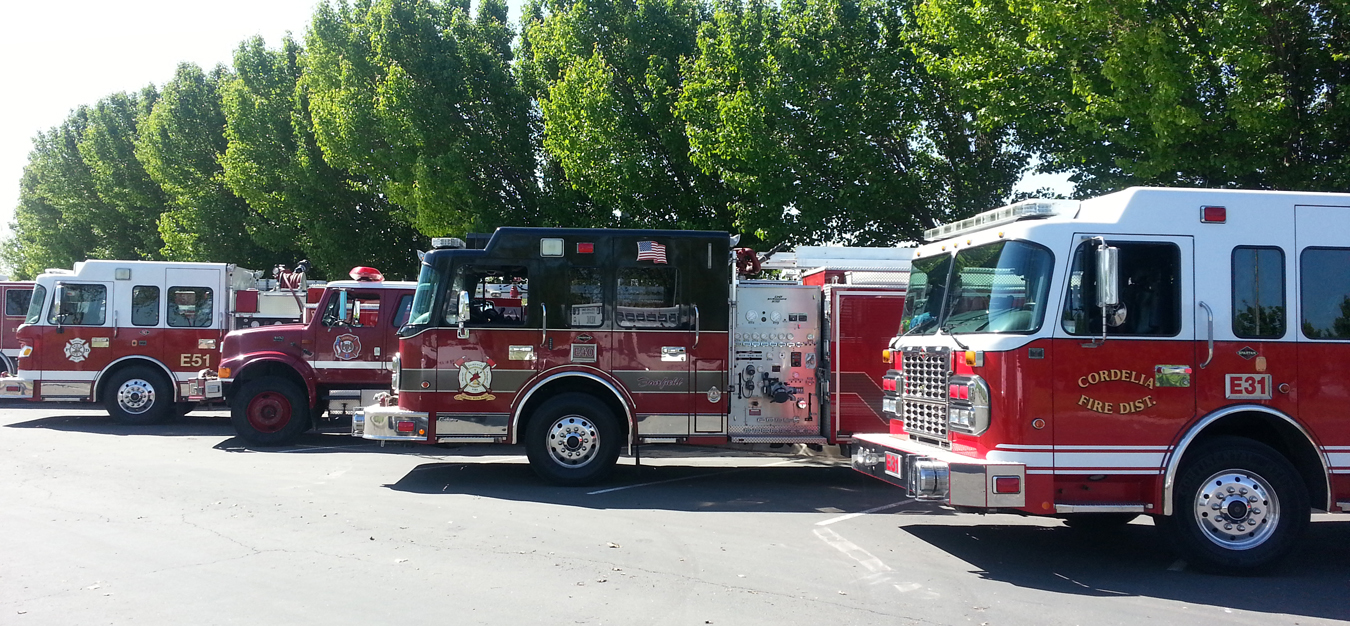
Exercises and Evaluations
CUSTOM DESIGNED EXERCISES AND EVALUATIONS
Our Master Exercise Practitioners Offer the Full Spectrum of Professional Discussion Based and Operational Based Exercises
Our Exercise Team will Design and Deliver Custom Discussion or Operational Based Exercises for your EOC Staff and/or Field Responders. These exercises follow the Department of Homeland Security, Homeland Security Exercise and Evaluation Program (HSEEP) and are consistent with all grant program guidelines and a Multi-Year Training and Exercise Plan. All exercise lead planners are FEMA Certified Master Exercise Practitioners (MEP).
Discussion and Operational Based Exercises
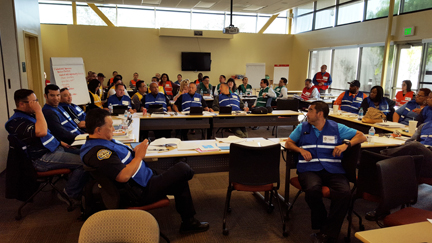 Exercises afford organizations the opportunity to evaluate capabilities and assess progress toward meeting capability targets in a controlled, low-risk setting.
Exercises afford organizations the opportunity to evaluate capabilities and assess progress toward meeting capability targets in a controlled, low-risk setting.
In exercise design and development, our exercise practitioners use the intent and guidance of organizational leaders and subject matter experts, along with the exercise program priorities to developed custom individual exercises. Our exercise planning teams will work with your organization to apply this guidance to shape the key concepts and planning considerations for an individual exercise or series of exercises.
Discussion Based Exercises
Discussion-based exercises include seminars, workshops, tabletop exercises (TTXs), and games. These types of exercises can be used to familiarize players with, or develop new, plans, policies, agreements, and procedures. Discussion-based exercises focus on strategic, policy-oriented issues. Facilitators and/or presenters usually lead the discussion, keeping participants on track towards meeting exercise objectives.
Seminars
Seminars generally orient participants to, or provide an overview of, authorities, strategies, plans, policies, procedures, protocols, resources, concepts, and ideas. As a discussion-based exercise, seminars can be valuable for entities that are developing or making major changes to existing plans or procedures. Seminars can be similarly helpful when attempting to assess or gain awareness of the capabilities of interagency or inter-jurisdictional operations.
Workshops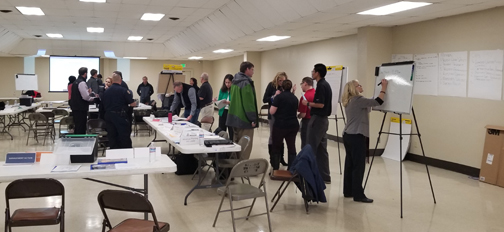
Although similar to seminars, workshops differ in two important aspects: participant interaction is increased, and the focus is placed on achieving or building a product. Effective workshops entail the broadest attendance by relevant stakeholders.
Products produced from a workshop can include new standard operating procedures (SOPs), emergency operations plans, continuity of operations plans, or mutual aid agreements. To be effective, workshops should have clearly defined objectives, products, or goals, and should focus on a specific issue.
Tabletop Exercises
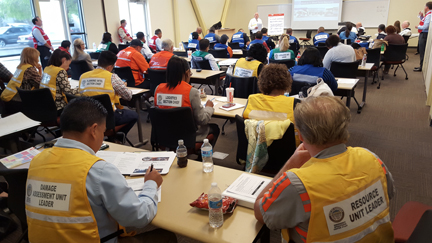 A TTX is intended to generate discussion of various issues regarding a hypothetical, simulated emergency. TTXs can be used to enhance general awareness, validate plans and procedures, rehearse concepts, and/or assess the types of systems needed to guide the prevention of, protection from, mitigation of, response to, and recovery from a defined incident. Generally, TTXs are aimed at facilitating conceptual understanding, identifying strengths and areas for improvement, and/or achieving changes in perceptions.
A TTX is intended to generate discussion of various issues regarding a hypothetical, simulated emergency. TTXs can be used to enhance general awareness, validate plans and procedures, rehearse concepts, and/or assess the types of systems needed to guide the prevention of, protection from, mitigation of, response to, and recovery from a defined incident. Generally, TTXs are aimed at facilitating conceptual understanding, identifying strengths and areas for improvement, and/or achieving changes in perceptions.
During a TTX, players are encouraged to discuss issues in depth, collaboratively examining areas of concern and solving problems. The effectiveness of a TTX is derived from the energetic involvement of participants and their assessment of recommended revisions to current policies, procedures, and plans.
TTXs can range from basic to complex. In a basic TTX (such as a Facilitated Discussion), the scenario is presented and remains constant—it describes an emergency and brings discussion participants up to the simulated present time. Players apply their knowledge and skills to a list of problems presented by the facilitator; problems are discussed as a group; and resolution is reached and documented for later analysis.
In a more advanced TTX, play advances as players receive pre-scripted messages that alter the original scenario. A facilitator usually introduces problems one at a time in the form of a written message, simulated telephone call, videotape, or other means. Players discuss the issues raised by each problem, referencing established authorities, plans, and procedures for guidance. Player decisions are incorporated as the scenario continues to unfold.
During a TTX, all participants should be encouraged to contribute to the discussion and be reminded that they are making decisions in a no-fault environment. Effective TTX facilitation is critical to keeping participants focused on exercise objectives and associated capability targets.
Games
A game is a simulation of operations that often involves two or more teams, usually in a competitive environment, using rules, data, and procedures designed to depict an actual or hypothetical situation. Games explore the consequences of player decisions and actions. They are useful tools for validating plans and procedures or evaluating resource requirements.
During game play, decision-making may be either slow and deliberate or rapid and more stressful, depending on the exercise design and objectives. The open, decision-based format of a game can incorporate “what if” questions that expand exercise benefits. Depending on the game’s design, the consequences of player actions can be either pre-scripted or decided dynamically. Identifying critical decision-making points is a major factor in the success of evaluating a game.
Operations Based Exercises
Operations-based exercises include drills, functional exercises (FEs), and full-scale exercises (FSEs). These exercises can be used to validate plans, policies, agreements, and procedures; clarify roles and responsibilities; and identify resource gaps. Operations-based exercises are characterized by actual reaction to an exercise scenario, such as initiating communications or mobilizing personnel and resources.
Drills
A drill is a coordinated, supervised activity usually employed to validate a specific function or capability in a single agency or organization. Drills are commonly used to provide training on new equipment, validate procedures, or practice and maintain current skills. For example, drills may be appropriate for establishing a community-designated disaster receiving center or shelter. Drills can also be used to determine if plans can be executed as designed, to assess whether more training is required, or to reinforce best practices. A drill is useful as a stand-alone tool, but a series of drills can be used to prepare several organizations to collaborate in an FSE.
For every drill, clearly defined plans, procedures, and protocols need to be in place. Personnel need to be familiar with those plans and trained in the processes and procedures to be drilled.
Functional Exercises
FEs are designed to validate and evaluate capabilities, multiple functions and/or sub-functions, or interdependent groups of functions. FEs are typically focused on exercising plans, policies, procedures, and staff members involved in management, direction, command, and control functions. In FEs, events are projected through an exercise scenario with event updates that drive activity typically at the management level. An FE is conducted in a realistic, real-time environment; however, movement of personnel and equipment is usually simulated.
FE controllers typically use a Master Scenario Events List (MSEL) to ensure participant activity remains within predefined boundaries and ensure exercise objectives are accomplished. Simulators in a Simulation Cell (SimCell) can inject scenario elements to simulate real events.
Full-Scale Exercises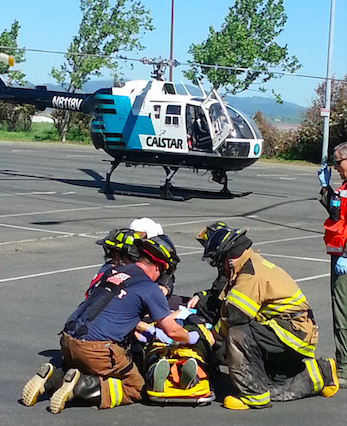
FSEs are typically the most complex and resource-intensive type of exercise. They involve multiple agencies, organizations, and jurisdictions and validate many facets of preparedness. FSEs often include many players operating under cooperative systems such as the Incident Command System (ICS) or Unified Command.
In an FSE, events are projected through an exercise scenario with event updates that drive activity at the operational level. FSEs are usually conducted in a real-time, stressful environment that is intended to mirror a real incident. Personnel and resources may be mobilized and deployed to the scene, where actions are performed as if a real incident had occurred. The FSE simulates reality by presenting complex and realistic problems that require critical thinking, rapid problem solving, and effective responses by trained personnel.
The level of support needed to conduct an FSE is greater than that needed for other types of exercises. The exercise site for an FSE is usually large, and site logistics require close monitoring. Safety issues, particularly regarding the use of props and special effects, must be monitored. Throughout the duration of the exercise, many activities occur simultaneously.
Evaluations
Exercise evaluation maintains the fundamental link between the exercise and improvement planning. Through exercise evaluation, organizations assess the capabilities needed to accomplish a mission, function, or objective. This assessment is based on the performance of critical tasks to capability target levels. Effective exercise evaluation involves:
- Planning for exercise evaluation;
- Observing the exercise and collecting exercise data during exercise conduct;
- Analyzing collected data to identify strengths and areas for improvement; and
- Reporting exercise outcomes in a draft AAR.
Using a common approach to evaluation supports consistent and meaningful reporting of exercise results.
After Action Reports and Improvement Plans
Each exercise is followed with an After Action Report and Improvement Plan. The recommendations help identify training, planning, or equipment needs which may be reflected in the Multi-Year Training and Exercise Plan.
A thorough exercise After Action Report (AAR) with an effective Corrective Action Program (CAP) will develop an improvement plan that is a dynamic document, with corrective actions that are continually monitored and implemented as part of the organization’s improving preparedness efforts. The corrective action program is an important tool in assessing the progress of or identifying necessary adjustments to the organizations Multi-Year Training and Exercise Plan.
The After Action Report summarizes key exercise-related evaluation information, including the exercise overview and analysis of objectives and core capabilities. The AAR is usually developed in conjunction with an Improvement Plan (IP). The lead evaluator and exercise planning team draft the AAR and submit it to meeting participants before the After Action Meeting. At the After Action Meeting key exercise participants and organizational leaders debrief the exercise, review and refine the AAR, and discuss and validate the analytical findings and corrective actions in the draft AAR/IP. This AAR/IP will be the foundation for the Corrective Action Program (CAP) which will assign corrective action responsibility to individuals and may identifying necessary adjustments to the organizations Multi-Year Training and Exercise Plan.
